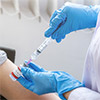Insights
A new era for manager due diligence
The 2007-2008 global financial crisis had a lasting impact on public and private pension funds, as the collapse of Lehman Brothers and massive fraud committed by Wall Street money manager Bernie Madoff placed greater emphasis on fiduciary obligations and manager due diligence.
Reaping big rewards in Asian small caps
Grace Yan, a Senior Portfolio Manager and a member of the Nikko AM Asian Equity Team, talks about the underlying reasons behind her recent success in winning Citywire Asia’s Best Fund Manager award and her passion about uncovering hidden gems in the Asian small-cap equity arena.
Multi-asset Monthly - June 2021
Despite very bumpy economic data—particularly on inflation—rates have compressed, implying most of the “surprises” have already been priced in. This is positive for growth assets that respond better to yield curve stability than the sudden steepening that defined the first quarter.
Asian Equity Monthly - May 2021
Supported by optimism about the region’s ongoing economic recovery, Asian stocks delivered decent gains in May, shrugging off concerns about a spike in COVID-19 cases in several Asian countries and persistent worries about inflation.
Asian Fixed Income Monthly - May 2021
US Treasury (UST) yields traded in a relatively narrow range in May. Inflation fears resurfaced, prompted by rising commodity prices and a marked increase in headline consumer and producer price indices in the US.
Are rising yields a concern for Asian REITs?
We believe that Asian REITs will continue to perform well while the economic recovery in Asia and the rest of the world remains strong and as long as the rise in bond yields do not become excessive.
Japan Equity Monthly - May 2021
We explain why corporate earnings in FY21 are expected to begin reflecting recovering confidence among Japanese companies as vaccine rollouts gain momentum. We also look into the BOJ’s trial run for a digital yen and the impact such a currency could have on the economy and markets.
Future Quality Insights - June 2021
Who hasn’t sat at home, shouting at the TV as a contestant on a quiz show offers up a hopelessly wrong answer? Incredulity, frustration and a sense of helplessness are all common emotions in that situation. At least you normally get a good laugh at the end of it.
Rising nationalism spurs Chinese consumers to go local
With the recent rise of nationalism in China, many foreign brands operating in the world’s second largest economy are now treading very carefully in their marketing campaigns and public communiqué.
While the Japanese equity market managed to strongly rebound in 2020 after a sharp fall at the start of the pandemic, it has lagged its peers in 2021 amid the country’s struggle to contain COVID-19 and its slow rollout of vaccinations.
From success story to cautionary tale: Assessing Japan’s vaccination effort
Multi-asset Monthly - May 2021
The US Treasury (UST) market has been an important barometer of the reflation trade for markets this year. Most asset classes have performed in line with movements in UST yields as correlations, whether positive or negative, remain strong.
Asian Equity Monthly – April 2021
Asian stocks turned in decent gains in April on optimism about the region’s economic recovery, especially after China and several other Asian countries reported better-than-expected 1Q21 GDP growth. The MSCI AC Asia ex Japan Index gained 2.5% in US dollar (USD) terms over the month.
Asian Fixed Income Monthly - April 2021
US Treasury (UST) yields stabilised in April. Yields came off despite domestic data confirming that the US economy had gained momentum, and inflation numbers that were above market expectations. The Federal Open Market Committee statement announced no new changes to the direction of monetary policy but offered a more upbeat tone on the outlook.
Net zero carbon: Is it all just hot air?
"Nowadays people know the price of everything and the value of nothing", quipped Oscar Wilde.
Japan Equity Monthly - April 2021
We gauge Japan’s slow vaccine rollout from an economic perspective and assess the shift in work styles that occurred during the pandemic and its potential impact on real estate prices.
The case for Asian small caps
Exhibiting an extensive track record of outperformance versus big caps and offering good diversification from traditional equities, we believe that Asian small-cap stocks provide numerous investment merits for long-term investors.
The striking 52% year-on-year surge in prices of second-hand US vehicles has, as expected, caught market attention, with global chip shortages often blamed for the disruption in the market for used cars. Behind the scenes, however, stands Joe Biden, the US incumbent president, whose first 100 days in the office was marked by several milestones, some of which could quite convincingly add more “meat” to the story.
Global Equity Quarterly Q1 2021
Our philosophy is centred on the search for “Future Quality” in a company. Future Quality companies are those that we believe will attain and sustain high returns on investment. ESG considerations are integral to Future Quality investing as good companies make for good investment.
Emerging market fixed income quarterly
Emerging Markets (EM) debt began 2021 by consolidating after an exceptional performance at the end of 2020. The negative performance was mostly driven by a widening of US Treasury yields while spreads remained broadly unchanged.






















